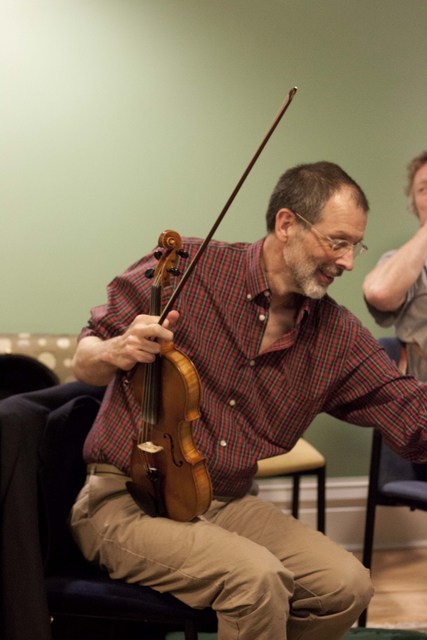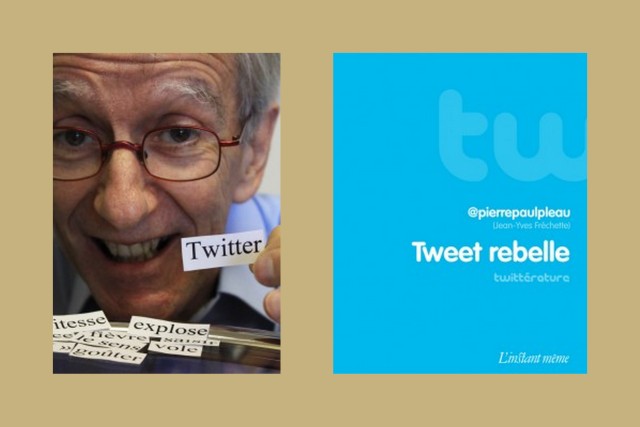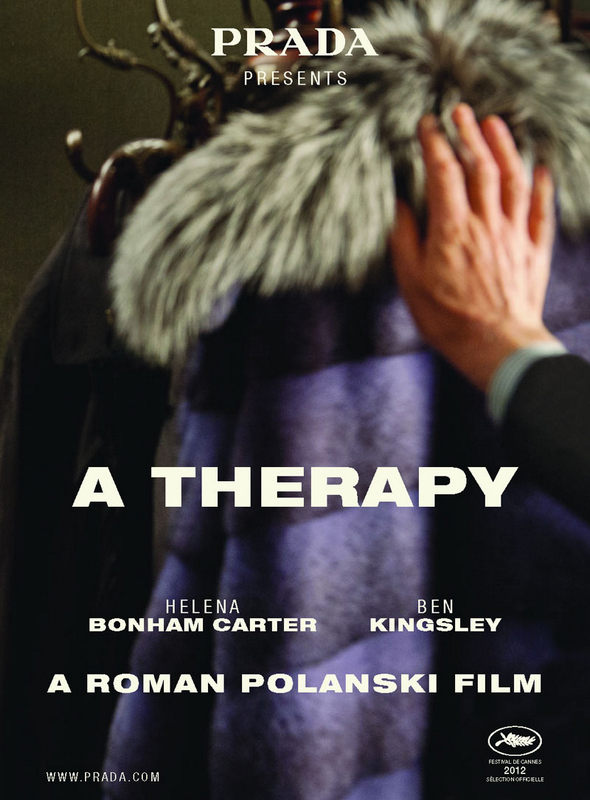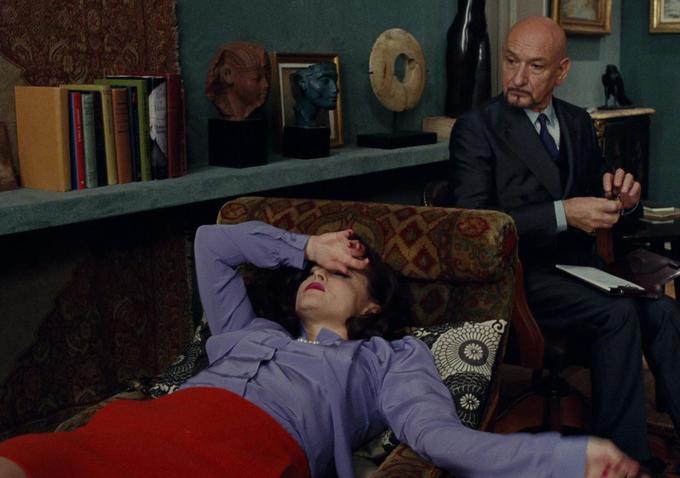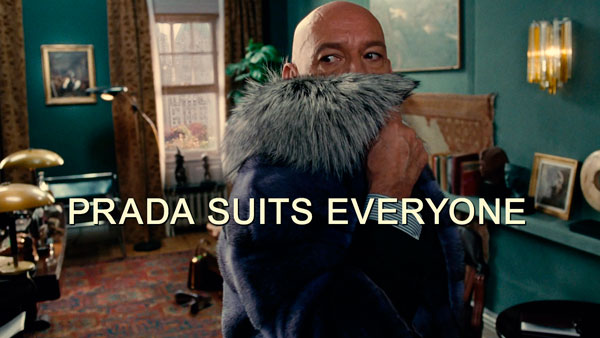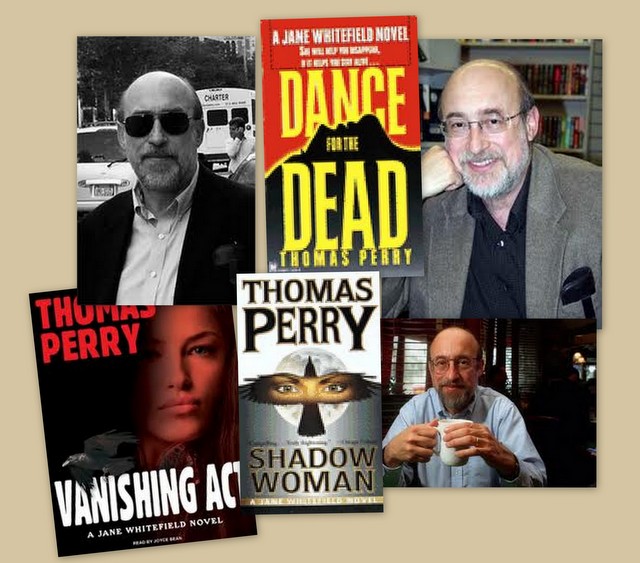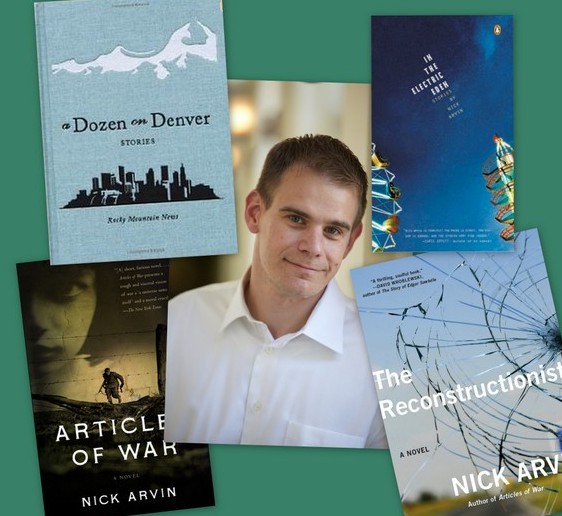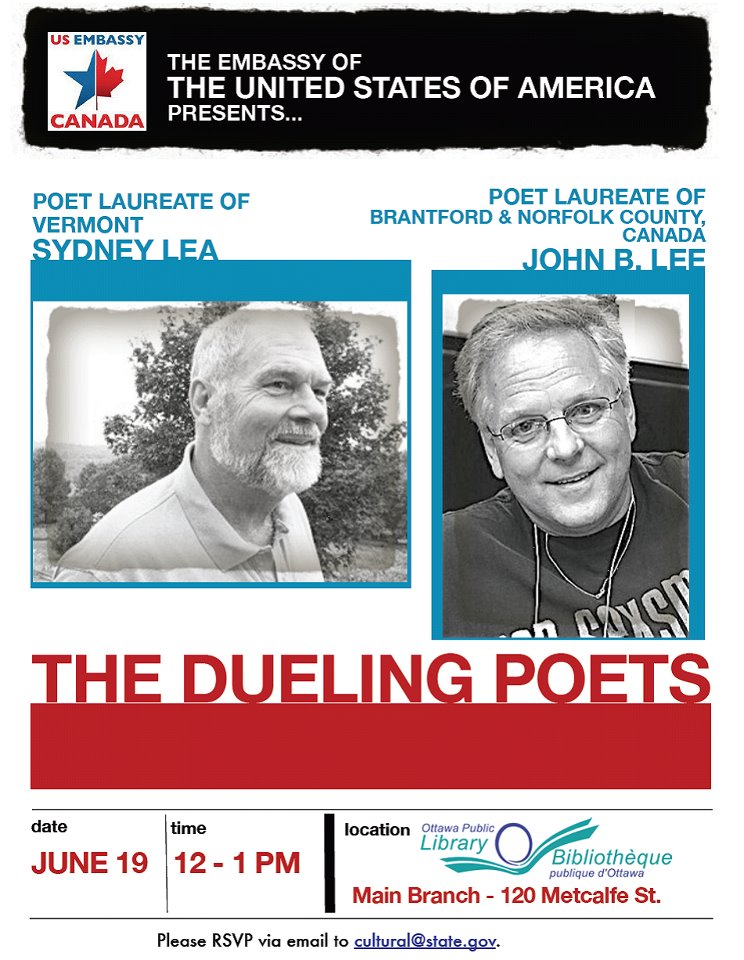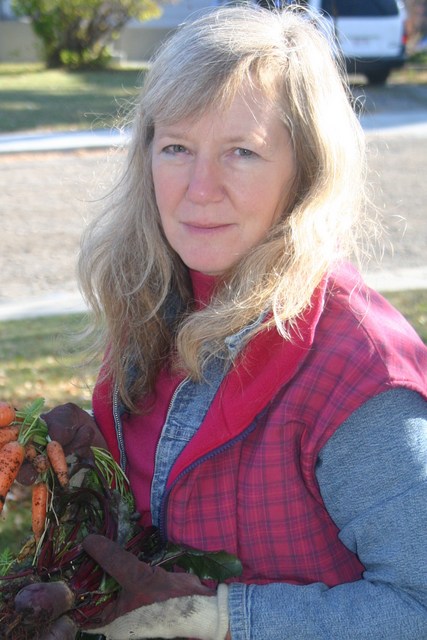
dee Hobsbawn-Smith is a curious being, poet, chef, chef-author, newspaper columnist (about food), eminent food person, and farm girl from Saskatchewan (she now lives on the family farm outside Saskatoon). Her latest book is called Foodshed: An Edible Alberta Alphabet, just out, yes, and you can read an early and most complimentary review here (I particularly like the Raymond Carver references). But dee also a fiction writer, about to launch herself into an MFA program. And for your delight and delectation, we offer a foretaste (smallish pun) of that new career, a short story about a girl who takes a job as prep-cook (there is a chef, too) in a ski town to escape a murky past. (NC multiple contributor Dave Margoshes took the photo.)
dg
§
“I’m lookin’ for work. Know of anything?”
The guy behind the motel counter hands over my key with shaking hands. He looks twice my age, stained skin under hazel eyes, a few grey strands in tangled auburn hair. The sweet reek of stale booze permeates the office. “The ski hill’s always hiring.”
“Can’t ski. How ‘bout supper, then? Is there a restaurant in the motel?”
“It closed last year. Try the lodge up the ski hill. You can’t miss the signs.”
I’m dubious. ‘Can’t miss the signs’ usually means the exact opposite. “Nothing closer?”
“You can get a decent steak or grilled cheese at the Night Hawk, they’re open late. On the east edge of town.”
“Thanks.” I lug my backpack upstairs and look longingly at the bed. My eyes ache. I’ve been driving through a blizzard since Cranbrook, not many road lights and the pavement hard to see, haven’t eaten since my bitter breakfast in Vancouver. I turn up the thermostat and head back to my car.
Hank Williams is sighing through the sound system at the Night Hawk. The cook grins and says, “Sure, why not?” when the waitress slaps my order through the window. I slide into the back booth and ask for a Johnnie Walker.
I’m halfway through a rare rib-eye when the motel clerk walks in and swings onto a bar stool. His hoarse voice carries above ‘Your Cheatin’ Heart.’ “I sent some girl here. Kinda cute, short black hair.” At the waitress’s jerk of her head, he spins the stool around. “Hey, you made it. Rowena takin’ good care of you?”
I nod, my mouth full of meat.
“Buy you a drink?” The glass lands on my table with a clatter.
“Thanks.”
He talks sporadically to Rowena as she polishes tumblers, but I feel his gaze sliding off me. When I sigh and push my plate away, he pats the stool beside him.
“Andrew James.”
“Constance da Silva. Call me Connie.”
“A drink for my friend Connie, please, Rowena.”
“How long you been in Fernie, Andrew?”
“Forever.”
Up close, crevasses run from his hairline to shaggy eyebrows, from his nose to the corners of his mouth. Under the rubble of whiskers, his cheeks look like crepe paper. The sleeves of a tattered sweater hang over his knuckles, but his fingernails are smooth and clean.
Rowena keeps his glass topped up, and raises her eyebrows at me with each visit to our end of the bar. He catches me studying him and blushes. I’m charmed. What kind of man blushes? “So…who is Andrew Brown? You single?” He nods. “Why you still here?”
“Got no desire to travel.”
Rowena turns off the stereo as we leave. Andrew holds his car door open. “A drink? I have a room in the motel. Just a drink.”
The narrow slice of sky above me is wheeling much too rapidly. “Long day. Thanks, but no.”
“Welcome to Fernie. See ya ‘round.”
The road is black velvet. I’m grateful to follow his taillights through the falling snow to the motel, and topple onto my bed fully clothed.
§
I land a job at the ski hill as a prep cook, no experience needed. No cooking, even, just peeling potatoes and carrots by the case, chopping sacks of onions. I keep my turtleneck on, wrap the huge white cook’s jacket around me and cut myself within an hour. The chef clucks as he wraps gauze around my thumb. We’re in his office and I concentrate on his tidy desk to counteract the wooziness. He watches my eyes find the photos. Two girls, teenagers, dark as a magpie, one frowning.
“Mes petites filles,” he says proudly as he pulls the tape snug. “Bien sur, Connie, you pay attention, eh? No more hack-cidents.” His silver moustache rises with his grin. “Maybe this keep you off the ski hill, eh?”
“I don’t ski,” I mutter, my face turned away from the seeping blood. “I paint.” The kitchen window is filled with grey clouds.
“Merde. Everybody ski here. You learn right quick, you’ll see, young miss like you. Some ‘andsome boy, and you be ‘otshot ski, tres vite. Best you bring him to me first, eh, I tell you if he is good boy.”
Laughing, I go back to work, feeling warmer.
There’s not much to this town. This is Snow Valley— the snow is famous— and everyone skis. There’s not much light either. The valley, almost a gorge, is defined by mountains, the Rockies on one side, the Purcells on the other. The grey rock-faces towering above the valley floor eat what little light there is, and the pale sun vanishes over the horizon by mid-afternoon. The clouds are a weight, leaking dampness that permeates everything.
I work evenings, two ‘til eleven, long hours on my feet, and Chef winces when I drag a chair across the tiles to the counter. “Cooks stand, ma belle,” he says, but he forbears saying anything stronger. There’s no name embroidered on his jacket, just his title. Chef. He pats the shoulders of all the cooks, male and female. No one seems to mind. He likes me, I can tell. He regularly strays past my station with his coffee, watching my hands clutching a knife, and finally says, exasperated, “Voilà, there is a better way, ma fille.” With a few quick motions, he shows me how an onion falls apart under the right strokes.
When he asks for the sixth time what brings a good girl like me so far from the bright city life, I nearly laugh. “A man and a dog,” I say. It’s the truth, but I don’t think he believes me.
Anywhere would have done. Leaving Vancouver was easy— no mortgage, no house, no kid— all those ropes that tie you down rather than guide you. I left a throw-away job as an office temp and an interminable waiting list into art school, my pockets empty, just heaved my easel, my paints and my backpack in my Chevy, and drove out of the rain without looking back. It was impulsive, and I ended up in winter.
To distract Chef, I point through the window, to the cordons on the mountainside, thin nylon ropes strung along a succession of metal spikes. “What’re those, Chef?”
He waves over a redhead whose jeans cling to muscled legs. She looks sixteen. “Sadie fais du ski, she explain, eh, Sadie?”
Sadie looks me up and down. “You the new cook? Rowena said she met you at the Hawk. Ya don’t ski? You’ll learn, there’s nothin’ else to do in this shithole town?” Every second sentence ends on an up-tilt, as if she’s unsure of herself. “Those ropes? They’re s’posed to keep newbies like you safe.”
I’m not reassured. The ropes won’t actually stop a skier, especially if she’s tumbling at any speed. But they give the illusion of safety.
Sadie grins impishly at me. “Where you stayin’?”
§
I drive to the Night Hawk each night after work, hoping to see Andrew. Something about him makes my fingers itch and tingle. I want to stroke the pale skin on his hands and smooth the lines etched in his cheeks. I want to paint the life back into his face. There’s a smart man beneath the sodden exterior. What’s kept him in Fernie?
He’s slumped on a barstool when I arrive. When I slide onto the stool beside him, his back straightens.“Hey, Con.” His hand, lightly brushing my upper arm, is quickly withdrawn.
One night, I recount how I left Vancouver. My lover, drunk, speeding along the tree-lined road past Second Beach. Some faceless woman, out walking her dog, the wet leash slipping though her fingers. Spinning car wheels and rain.
“It was an accident. He’d never kill a dog deliberately. I know that.”
“Wait a minute. That’s why you left? Because your guy had an accident? And killed someone else’s dog?”
“No, not really. We were done already, the accident was just the last straw. I just didn’t know how to let go. Thought I had to leave the city instead of just leaving him.”
He sighs and briefly rests his hand on my shoulder. “Did you forgive the guy?”
“He didn’t mean to. Dunno.”
“But he was drunk. That’s the hard part, hmm?”
When I sniffle, Andrew pulls a tissue from his pocket and offers it, then rubs his forearms, his arms forming a cradle across his chest.
“I’ve never had a dog. I used to want one. Grew up here in the valley, I told you that. My mom married a miner when she was sixteen.”
I have my voice under control again. “So young. A kid, hmm?”
He nods. “Yeah, knocked up. He burnt the place down when he was drunk one night, his cigarette fell outta his hand.”
“Oh no!”
He shrugs. “I was still a baby. We all got out alive. Mighta been better if we hadn’t, though. She died later anyhow, she was twenty-nine. If I’d been there, she mighta had a chance.” He finished his drink. “And my dad, well–” He lifts his hand to waggle two fingers at Rowena.
I’m silenced. Later in the women’s room, Rowena fills in the missing bits. Andrew’s dad died three years after his wife. “Silicosis. Lots of miners buried up behind the old coalmine,” she says, examining me in the mirror. “Did he tell you how his mom died?”
I shake my head, feeling ghoulish. “I don’t want to know.”
Rowena doesn’t pay any attention. “It was a big scandal. Andrew was taken away from them when he was twelve, he was gone for nearly a year. His dad had been beating him. And worse. He’s got burn scars all over his arms.”
“Oh no!” I picture Andrew, his arms embracing each other through his sweater. Rowena passes me a paper towel, then relentlessly continues.
“His mom was tiny, couldn’t have stopped a mouse. While he was away, she died. A broken neck. His dad claimed she fell from the balcony trying to change a light bulb. There was an inquest, but never any charges, the guy was already pretty sick. Andrew’s always blamed himself.” She looks at me sideways in the mirror. “You know, he never talks to anyone. Just drinks. Plays Hank all night. You’re the first one who’s heard him say boo.”
I go back to the bar, pity and revulsion two-stepping in my gut. When we leave at midnight, I try not to gawk at his forearms as he pulls on his gloves. In the parking lot, he brusquely declines my offer of a lift. “No. I need the walk.”
“Andrew, don’t be an ass, it’s twenty below. Just get in, will you?” I drop him at the motel. He reaches out and touches my hair where it juts out under my toque.
“Thanks, Con.” He scrambles out of the Chevy without looking at me.
§
I move my car to the parking lot behind a row of dun-coloured apartments, and leave my easel folded on the back seat. Rowena and Sadie, the two waitresses, adopt me. I’m only three years older than either of them, but they seem like gum-chewing kids, talking nonstop about boys, movies, clothes, but mostly about when they will leave the valley. They’re completely baffled that I left Vancouver and ended up here. A man, I say again, a man and a dog. They look at me disbelievingly.
“No one wants to be here, Connie,” Rowena says over spaghetti and beer. “This place is the armpit of the world.”
I tilt my head, considering. Each day, I drive over the bridge and through downtown Fernie on my way to work. En route, I pass a drug store, a post office, the Night Hawk, a realtor’s office flogging unbuilt condos on the ski hill, and a grocery store. Nothing to disprove Rowena’s claim. Nothing I want to commit to canvas. I shrug. “It’s enough. For now.”
Sadie’s head bobs, her mouth full. Rowena keeps talking. “When I have enough money saved, I’m moving to Calgary. That’s where the real livin’ is… Hey, we’re going skiing tomorrow, why don’t you come? Sadie’s a crackerjack teacher, she’ll get you started, won’t you, Sade?”
“I’m still working evenings,” I say, and nod to Chef as he makes his way to the exit. He grins at me and makes ski-pole-like gestures with his hands.
Sadie wipes her chin. “Perfect? We’ll go at nine? You’ll be off the hill by two. Chef won’t mind if you’re a bit late, he likes you? And those cute lifties from Australia are working on the back slope? We’ll go over there after the bunny hill.” She giggles and glances at the corner table where the lifties are hoisting beer glasses.
Wait a minute. My mouth shapes the words, but I can’t get them past my roommates’ enthusiastic planning. “But what about skis? Boots? Poles? I don’t have any of that stuff.”
“Rent it all at the hill, Connie. Staff rates. No worries.”
The sky is a black ruin when I walk to my car, leaving the other two flirting with the Aussies. The drive down the mountainside unnerves me, two miles, narrow turns like a jackknife. No lights, just the eerie reflection of headlights off the walls of snow. I edge down the ice and brake abruptly when a deer shoots across the road. As my car swerves, all I can focus on is the white flag of the deer’s tail.
By the time my front bumper comes to rest against the hard-packed snow, the deer is nowhere in sight. I get out of my car and peer at my fender.
A car comes around the corner and slides to a shuddering halt at the toes of my boots.
“Jeez, Connie! Are you crazy?” Andrew leans out of the open window.I can barely see his face. “This is a terrible spot to stop. What are you doing?”
“I think I hit a deer. There’s blood on my fender.”
“There’s dozens of deer around. You okay?” I’m shaking, but I nod. “Get back in your car before someone broadsides you. Here, I’ll turn around and lead you down.”
We creep down the slope, my hands trembling on the wheel, the nose of my Chevy almost nudging his Dodge so I can benefit from his high beams. At the turn to town, he pulls over, gets out and walks back to me. “Let’s have a drink. It’ll calm you down. Meet me at the motel. I have some rye in my room.”
I’m still shaking. “Yeah.”
§
I’m sprawled on the cold tile floor in Andrew’s cramped bathroom, fully dressed. I hobble to my feet, my head clanging, my mouth lined with spiked fuzz. I wash my face and use my fingers to smear Andrew’s toothpaste over my gums. When I stagger into the bedroom, Andrew is nowhere in sight.
I’m late getting to work. “Sorry, Chef.” His knife blade on the wooden chopping block pounds a tattoo.
Chef watches me for a minute, then tilts his head at the back wall. “Eh, ma fille, aspirin in the cupboard.”
The afternoon drags and clatters. Chef sends me home early. “You better tomorrow, oui? This, this not so good, hmm?”
I grimace and wonder vaguely about his daughters. Surely he’s seen hung-over girls before. “Sorry, Chef.” His knife is making short work of my onions as I swing the door closed.
The morning’s forgotten ski lesson surfaces as I enter the apartment. My roommates look daggers at me. Sadie’s voice is one long exhale. “We waited ‘til nearly noon, we missed half the day, all the gorbies got there before us, the snow was ruined?”
“I hit a deer last night coming down the hill. Andrew invited me for a drink and I slept in.” I surprise myself when I hear what comes out of my mouth–apologizing as if I’m twelve. I haven’t felt so defensive in years. What is it about this valley?
“Andrew. He’s pathetic. Why’d you want to hang out with him?”
“Sadie, how can you say that? You know what he’s–”
She steamrollers me. “You know how old Andrew James is?”
I think briefly of Andrew’s lined face. His dead mother who couldn’t protect him. “Sadie, what does it matter? Thirty-five?”
“Twenty-two.”
§
My knife skills are progressing. No bandages for at least a week. Chef teases me about my long fingernails until I capitulate, trim them short and strip off the nail polish. As reward, he sets a work table beside the window so I can peel carrots in sunlight. But the pale rays don’t help my mood, nor does realizing that no one else seems glum. Line cooks chatter as they flip steaks and burgers, the salad girl flirts with the servers as she chops anchovies for the Caesar dressing, and the baker whistles nonchalantly over the oven’s hum.
A week passes without a sign of Andrew. When I drive to the motel, the day manager is irate. “He hasn’t been around for days. You tell that sod to get his ass back to work, will ya?”
I contemplate asking Chef to help with a search. But Sadie sticks her head into the kitchen during dinner service.
“All right, pouty-face. Let’s try this ski lesson thing again? Tomorrow morning? Get your lift pass from the office.”
The bunny hill is glazed with ice. Sadie, a nimble jack rabbit on her skis, orders me around like a born leader. Up the rope tow, snowplow down the hill, up the rope tow, snowplow down. “Lean forward, Connie! If you can stop, if you can snowplow a turn, you can go anywhere?” I stop counting the falls and try to ignore the bruises coagulating on my left hip. After I make my first decent run without falling, Sadie crows with triumph and leads me to the T-bar.
Side by side in the load-up zone, the T-bar comes up behind us, scary-fast. The lifty steps back, glances at Sadie, still chattering, and winks at me. The knot in my gut loosens a little.
“Squat? Don’t look down!” At the top of the lift — “Lift your toes?” — too late. My ski tips catch and I pitch off the T-bar. I struggle to my feet and my skis immediately slide out from under me. “Snowplow! Point your toes down the hill. Lean forward?”
I’m exhausted when we return to the lodge. My thighs ache, and the bruises feel like bone chips. At work my hands are so shaky that I cut myself again.
Chef, exasperated, sets a slice of chocolate pecan pie beside me and ruffles my hair. “You go ski today? First time? Before you go work? You crazy girl. Next time, eat first.” I don’t have the energy for a rejoinder.
I sprawl my bruised body on the couch after work while Rowena eats popcorn and watches the news. She wakes me to rant. Paul Bernardo has been arrested. “How can a man look like a human being and abuse helpless kids like that?” I have no answer, fall asleep and dream of Andrew’s arms seething, raw with open burns.
§
I hardly make a dent in the endless sacks of onions, but their pungent bite clings to my clothes and follows me home. After more falls on the bunny hill, I collapse on the couch, a glass of scotch balanced on my ribcage. Rowena calls to report Andrew has surfaced. “He’s been AWOL before, Connie, this isn’t the first time.”
“Why’s he do it? Where does he go?”
“Dunno. But I hear he holed up with a couple old miners, guys who don’t have families.”
“What about work? Will they give him back his job?”
“Yeah. The manager knew his dad. They worked together in the mine.”
§
Sadie meets me at the hill, flat light barely illuminating the morning. “No bunny hill,” she says sternly. “Let’s just get to the T-bar?” I get on and off without mishap, and we start slowly down the slope. “Down there,” she says, pointing with her ski pole, “I’m going on ahead. Follow the green run? It’s nice and level. Keep out of the trees. I’ll meet you at the bottom?”
I nod without looking up, trying to remember my turning mantra. Weight down, turn, shift to other leg, straighten. Or is it reversed? I can’t keep it straight.
Sadie vanishes, a sleek shadow sprinting down the hill. A breath of fog blows across the hillside. I lose my rhythm. Fall. Get up and lock my legs into snowplow, chug down the track.
At the fork, the signs are fallen, fresh ski tracks running in both directions. I hesitate, then choose the flat track to the left. A few hundred yards along, it drops steeply beneath my skis, the trees closing in. I stop, Sadie’s thin voice in my head. Point your skis down the hill, keep your weight forward. Surely not down this monster of a slope. But I can’t see any other way down. Twenty minutes crawl past while I hesitate on the brink, hoping someone will come down the hill behind me. The cold trickles under my jacket where snow has lodged. My toes are numb when I aim my skis across the incline and descend a few feet on the oblique. At the far side, I shift my weight, begin the turn and hesitate, my skis slipping out from under me.
I roll, bump, crash, poles flying loose, skis unhinging. “Damn it!”
When I sit up and wipe the snow from my face, I spot my poles, jammed against a tree trunk, my skis at the bottom of the slope, tangled in the ropes. I grab the poles and slide down the ice on my butt to my skis. I stamp my boots into my bindings and snowplow through the flattened meadow to the lodge, ignoring the lifties at the T-bar when they wave. My gear clatters onto the counter of the rental shop.
I’m in the lounge, on my second hot chocolate and brandy when Sadie shows up, pink-cheeked and bright. I glower at her. “Never again, Sadie. Not after you ditched me like that.”
“All right, sorry? The lifties said you looked pissed off.” She wriggles, puppy-like, but draws back when I shake her hand free of my arm.
“Pissed off? I damn near broke my neck.” I wave at the waitress.
“All right. Be a bitch.”
The light is fading when she returns. “I just took my last run, Connie. I gotta start work. You still mad?”
“Give it up, Sadie.” She snorts and stomps away. Andrew comes in later, his parka dusted with snow.
§
“Hey, Con. It’s late. Rowena told me you hit the hill again.” He appraises my face. “Didn’t go so good, eh?”
“Have a drink with me?”
I lean on him on the way to the parking lot. My keys fall into the snow.
“That Sadie, she ditched me.” I crawl along the ground, find my keys. “Don’t think I’ll—” Find my blue car, find the ignition. “Can I come home with you, Andrew?” He puts an arm around my neck, his cheek tight against me. The steep road falls into the darkness.
§
At noon, I get up and look in Andrew’s mirror. Red-rimmed eyes gaze back at me. Hands shaking, I pull on my turtleneck. Beyond the window, greyness. Bits and flashes surface—Andrew flaccid and limp, his face fallen, kisses that go nowhere and taste of despair. His muttered voice. “Forgive me, Con.”
He’s still sleeping. Halfway through my second cup of coffee, something stirs in my memory. I plunge outside without gloves or hat or jacket. The Chevy sits in the parking lot, its block heater cord dangling loose, the right front fender dented so deeply the wheel is immovable. I have no memory of driving down the mountainside.
I leave Andrew sleeping and walk home. Above me, the sky telegraphs bad weather. The phone jangles as soon as I walk into the apartment. Rowena, on the couch under a quilt, lifts her head. “Get it, will ya, Con. Sadie has whats-his name, Chad, the Aussie—” A languid arm waves at the bedroom down the hall, then vanishes under the covers.
I catch the phone on the fifth ring. “Connie? You work today early. Banquet tonight.”
“I can’t drive, Chef. My car—”
“I pick you up, oui?”
I sit at the kitchen table, head pounding. My stomach heaves. When the door buzzes, I jab the entry button. It buzzes again, and Chef stands in the doorway. His face tightens as he looks around the apartment, taking in my half-empty scotch bottle and its galaxy of glasses on the television. Empty beer cans on every surface, table and sink stacked high with dirty dishes. Heaps of newspapers and takeout boxes. A laundry basket by the kitchen door. Rowena tangled in the quilt, snoring on the couch.
The place looks tawdry. I stare at my feet, too embarrassed to bring up my car’s dented fender.
Chef is silent on the drive to the lodge. In the parking lot, he turns to me. “Connie. What happen, hmm?” His capable hands, palms up. “You one smart cookie. You need help?”
I shake my head, blink away the tears. “No, Chef. No help needed. Thanks.”
On Friday night after work, Andrew is propped on the Night Hawk bar. He won’t look at me and drinks his rye in silence. I buy a mickey of Johnnie Walker and slip back to the apartment.
The clock-face reads noon when I wake in pain, unable to move, my belly shrieking.
“Rowena, wake up, there’s something wrong.”
“What is it?” Her voice fades. “Go back to sleep.”
I grab my remaining safety line and dial the ski hill’s kitchen. “Chef, Chef, I need to go to the hospital.”
§
The bearded young doctor perched on the edge of my bed is unequivocal and kind. “Nothing showed up in the gastroscopy, Constance. Nothing is physically wrong with you. So. What’s going on in your life?”
I mutter answers. Work, yes. Exercise, sporadic. Drink? Uh huh. Every day? Yeah. How much? Hmm. Happy? Silence. Hobbies?
I think of my easel, ignored in my car, shake my head.
He stands up and sighs. “There’s nothing happening in your body that a good dose of sunshine and happiness won’t cure. You need to get yourself a life, Constance. And quit drinking. I’ll check on you later.”
Chef appears, bearing chocolate tarts and thick meaty stew. He pats my hand, rubs his moustache until he finds his voice. “Your car, I fix ‘er. You take better care, ma belle. Oui?” I squint, rub my nose so I won’t cry again.
Sadie and Rowena arrive together. Sadie’s face is pale, her mouth pursed. I hug her. “Sadie, eat this tart, Chef brought too much. Rowena, how’s Andrew?”
Rowena shrugs, her face impassive.
I have lots of time in between the nurses’ coming and going. I’ve never been much for praying, but I try. All I see are grey mountains and grey sky, closing in.
Andrew doesn’t stop by. I make one long distance call, to Vancouver, and wipe away my tears as I hang up.
§
My belongings are jammed into my backpack. I embrace Rowena, then Sadie.
“Here’s my cell number. Call me, both of you, when you’re ready to get outta here, okay?”
In the parking lot, I walk around my car. No dents. Chef has kept his word, and more. He’s found me a job peeling vegetables at a private club in Calgary until I get into art school. At the ski hill, I hug him when he gives me a brown lunch bag.
“Smoke boeuf, remember to eat it!” I peek inside and spot a roll of twenties tucked inside the plastic wrap encasing a clutch of cookies. He scribbles his email on a card. “In case you change your mind, ma belle. Or if the job is no good.”
I stop at the motel. Andrew isn’t at the counter. I make my way down the dim corridor and knock. I don’t waste any time when the door opens.
“I’m packed, Andrew. I’m leaving. You should go too. This place—it’s killing you.”
“Connie, I can’t leave, it’s all I know. And I’d never forgive myself if I drag you down. Sorry. I can’t come.”
“You don’t have to come with me, Andrew. You just have to get out. To anywhere.” He’s wearing a t-shirt, the first time I’ve seen his bare arms in daylight. I stare at the evidence, scars like silver moons on his pale skin, then at his face. “Rowena told me about your dad. None of what happened back then was your fault, you were just a kid. You couldn’t have saved her, and you don’t have to forgive him. But forgive yourself!”
“I can’t, Con.”
I draw in a breath, but my gut still trembles. “I can’t stay.”
“So you’re going back?”
I grimace. “I called him, yeah. I’m not going back. I’m going to Calgary. If I’m lucky, I’ll start at art school in the fall. But I’m leaving—this.”
Andrew gently touches my cheek. “Connie. I’m not much to leave behind.”
I head east through the pass toward the high mountains, the Chevy’s tires whining on the ice. My easel rattles on the back seat. For the first time in months, as a flicker of sun chases across the snow-packed highway, I wonder about how to translate shadows into paint.
—-dee Hobsbawn-Smith
————
dee Hobsbawn-Smith’s poetry, fiction and food writing has appeared in magazines, newspapers, anthologies and literary journals in Canada and the USA. She is an award-winning freelance journalist, a retired chef and culinary educator. After 27 years in Calgary, she now lives in the family farmhouse west of Saskatoon with her partner, the writer and poet Dave Margoshes, and their pets. A four-time alumna of Sage Hill Writing Experience, dee begins studies in September, 2012, in the University of Saskatchewan’s MFA in writing program. Her fifth book, Foodshed: An Edible Alberta Alphabet, has just been published by TouchWood Editions.


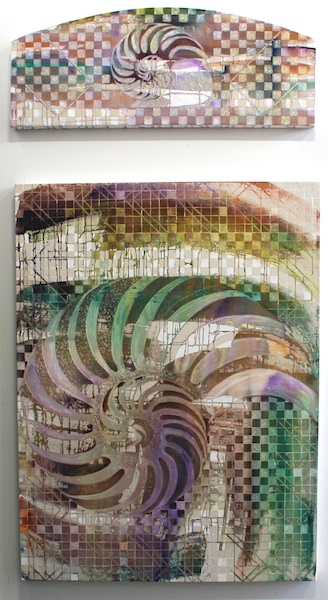

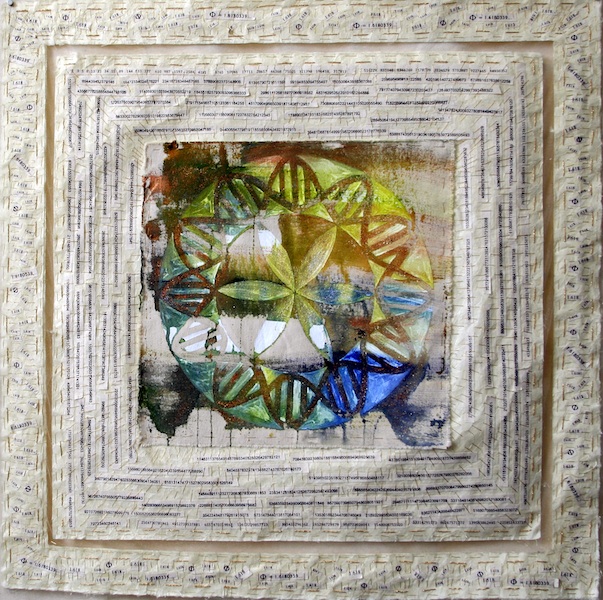
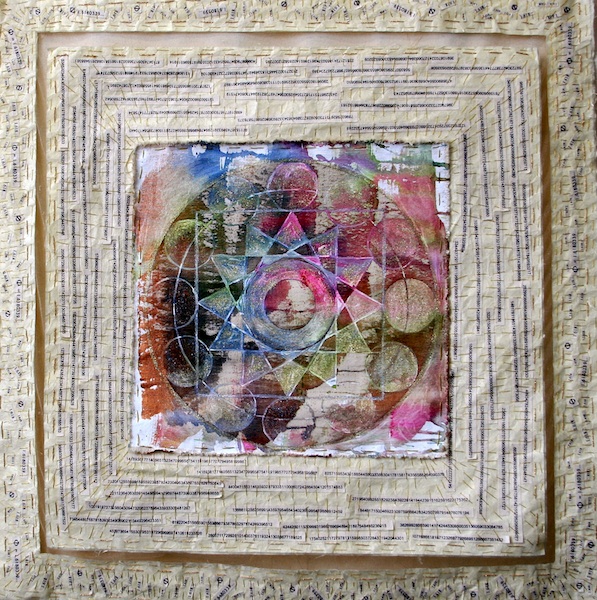
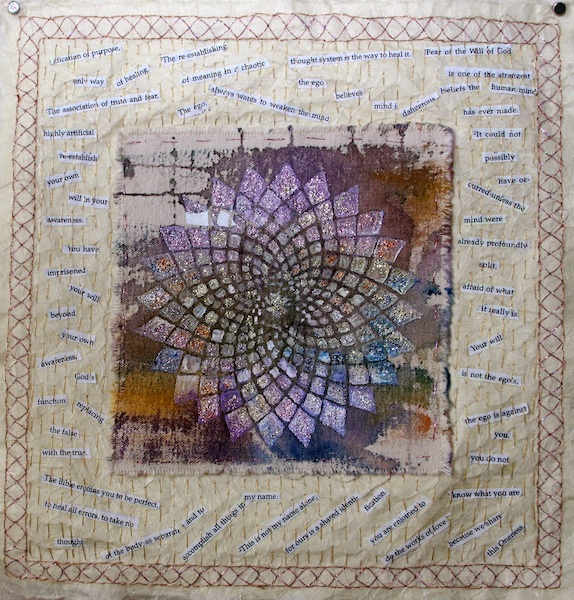

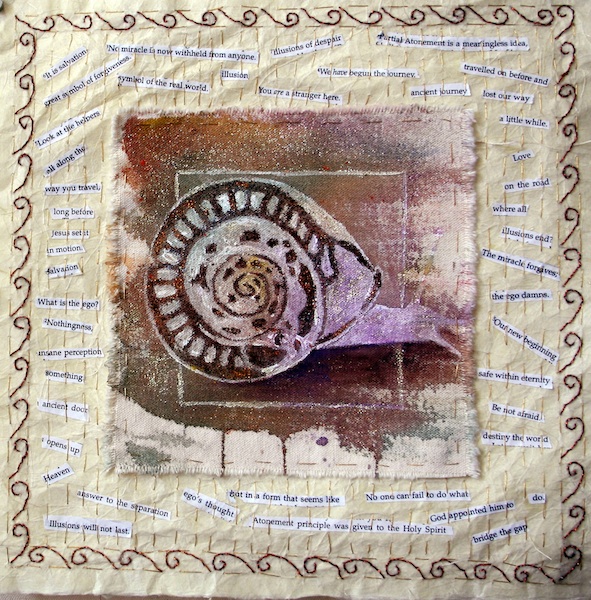
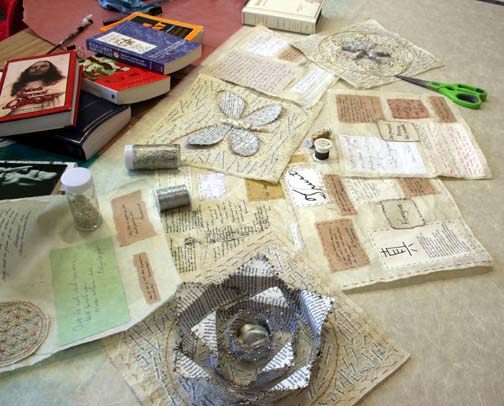

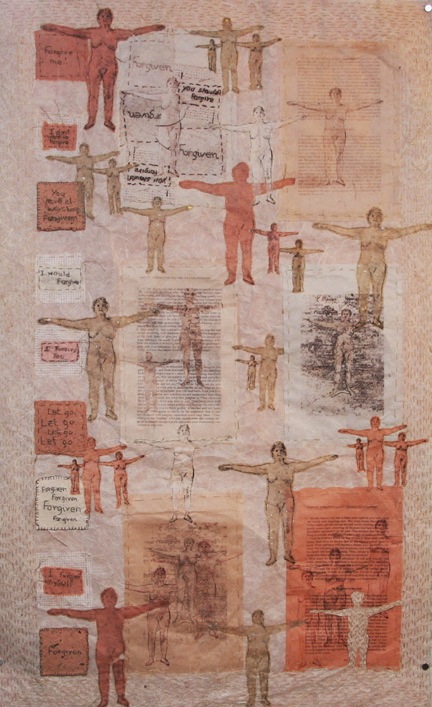




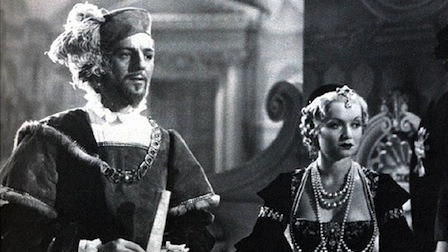
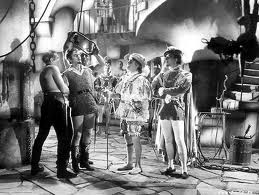

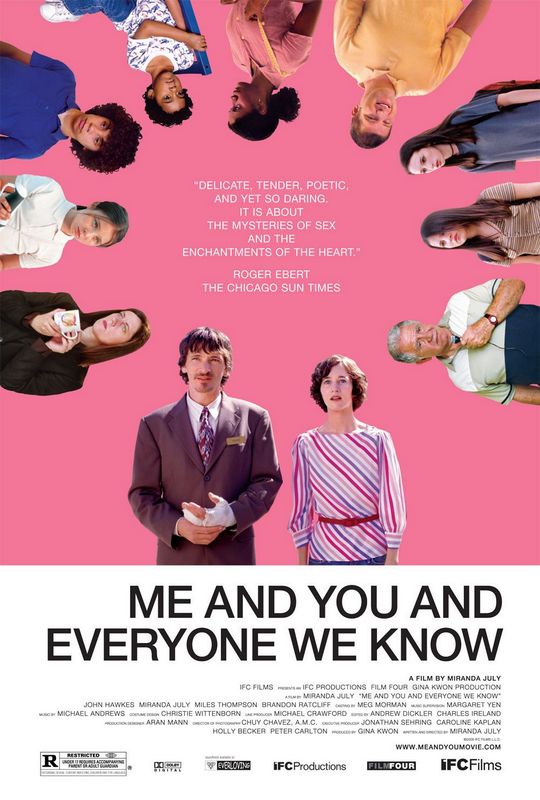
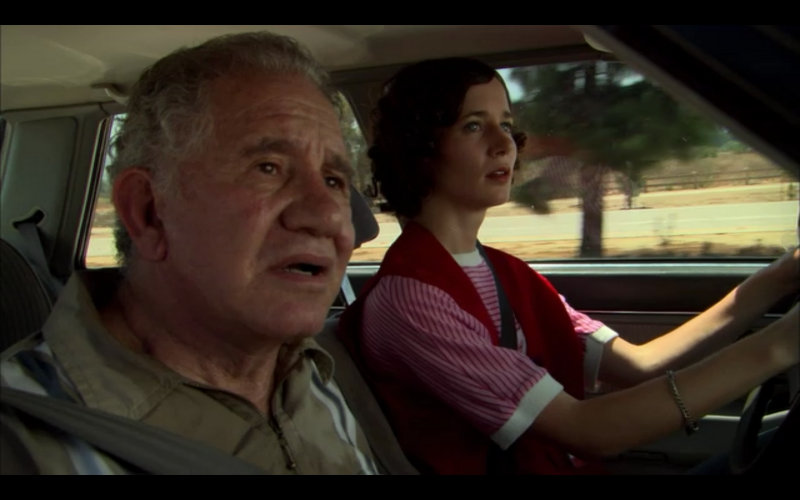
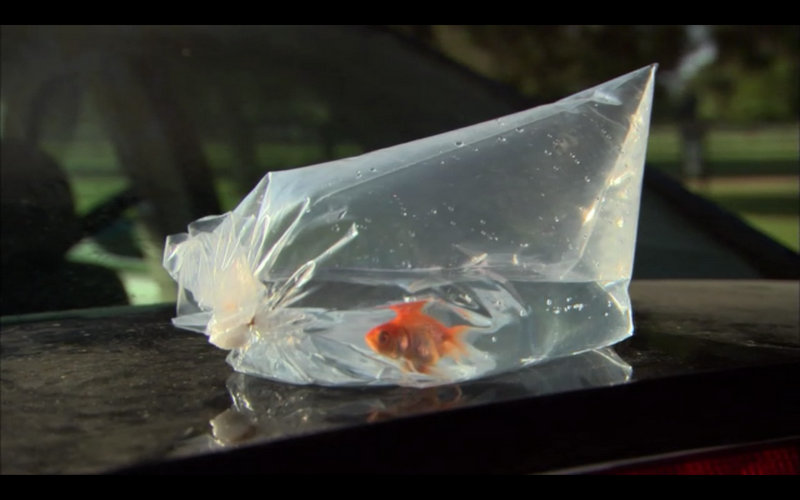


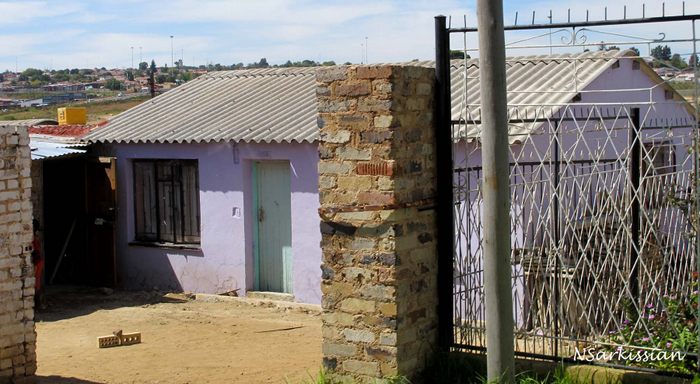



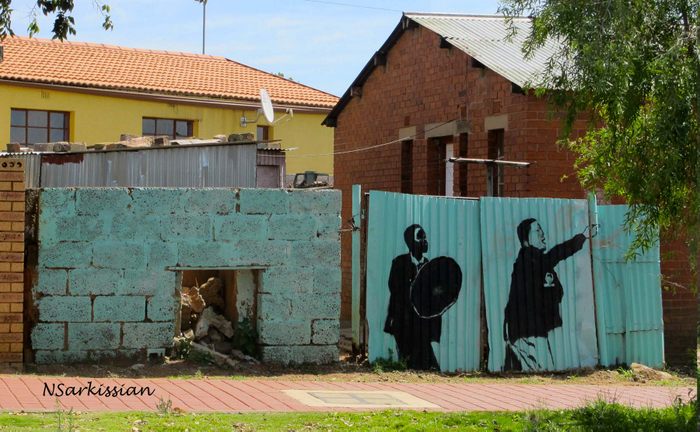

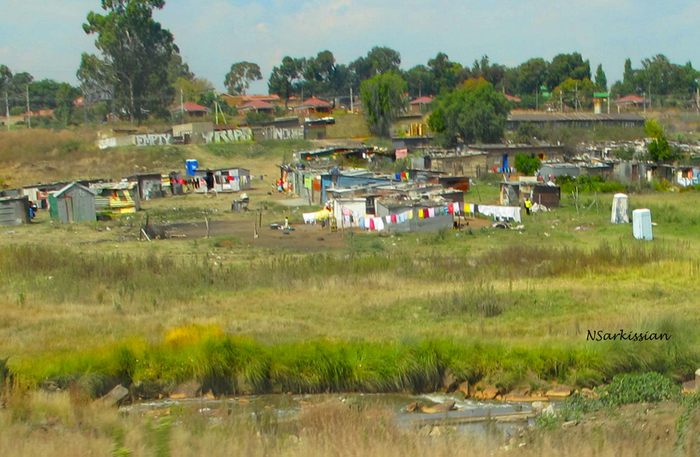






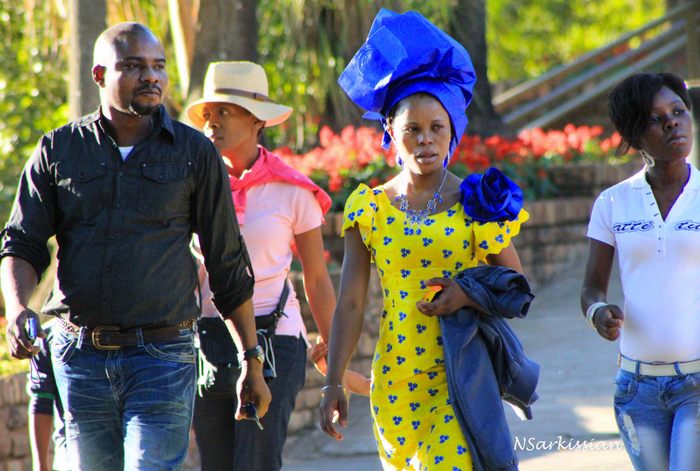

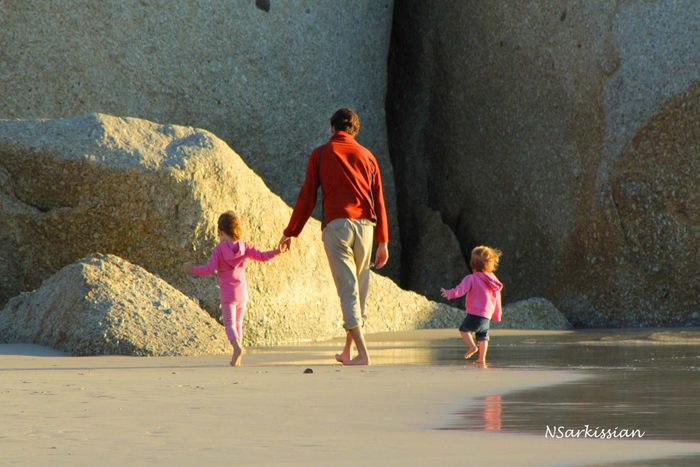

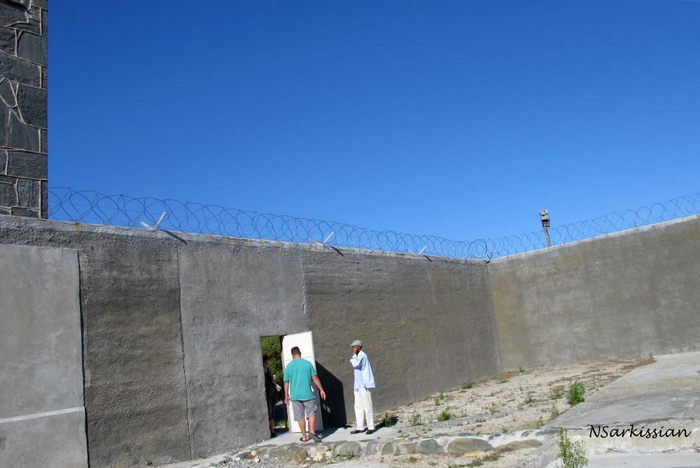







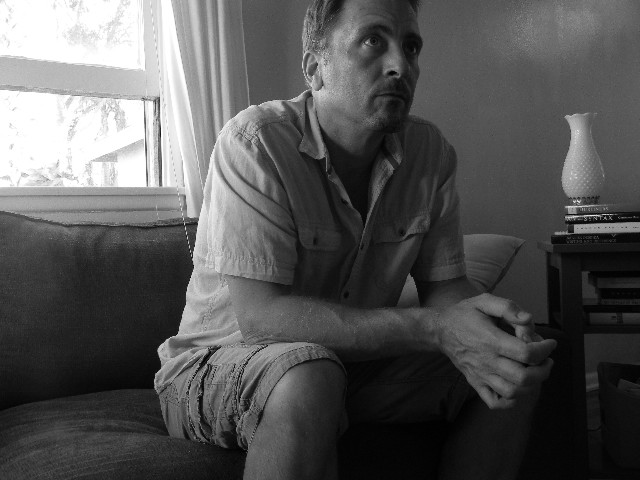
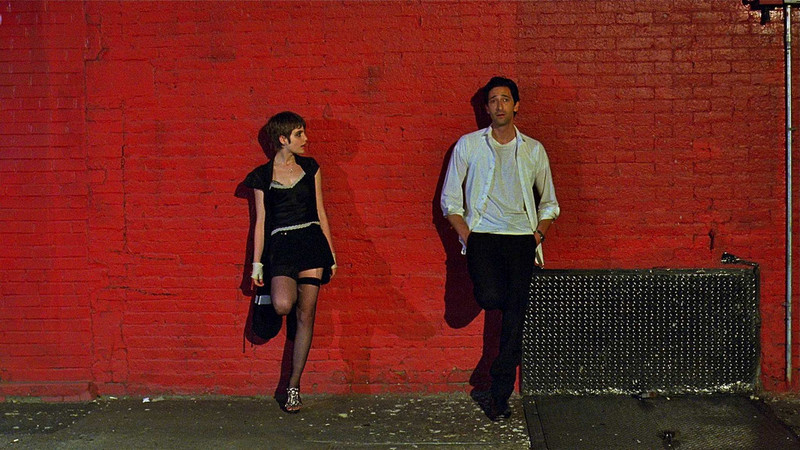

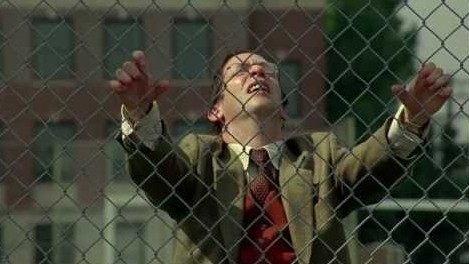



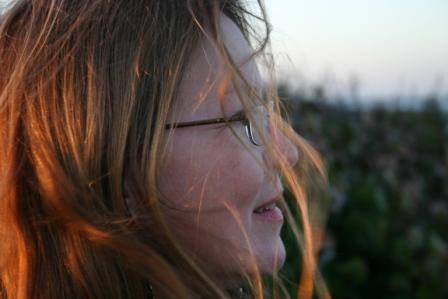

 Bromeliads with Red Blossoms
Bromeliads with Red Blossoms Hospital Heart Monitor
Hospital Heart Monitor Green Anole
Green Anole Sunlight on Wall with Euphorbia
Sunlight on Wall with Euphorbia Agave Stalk and Telephone Pole
Agave Stalk and Telephone Pole Why I Live in the Sky
Why I Live in the Sky Bougainvillia
Bougainvillia Gator in Pond
Gator in Pond Hawk
Hawk Raccoon in Humane Trap
Raccoon in Humane Trap Magnolia Blossom
Magnolia Blossom